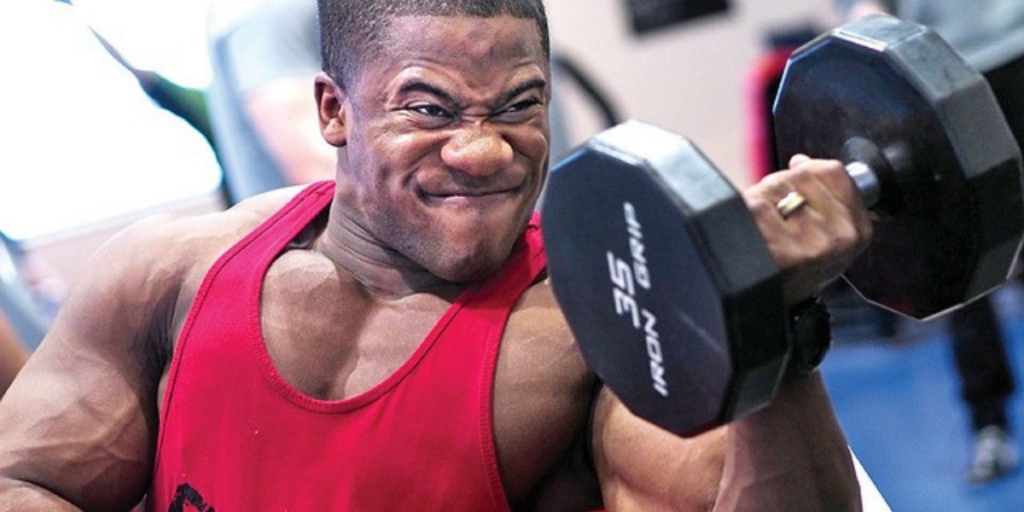Fitness
4 BEST STRENGTH WORKOUTS FOR ENDURANCE ATHLETES
This is an optimal strength workout for endurance athletes. Use this program to take your strength to the next level and have an edge over your competition.
In the past, athletic training for endurance sports was thought to be counterproductive because of its muscle building effects. In sports such as running, cycling, running, long-distance swimming, and triathlon, the extra bulk of muscle equal drag force. Endurance athletes strive to be lean to continue to shave precious seconds and minutes off their competitive times.
Unfortunately, in the quest for improved performance, the focus on sport-specific training has become almost exclusive. Thus, competitors often spend very little time in the weight room, with their only exposure to strength workout being single joint general lifts in the off-season and lightweight machine-based circuit work in the early season.
The overall of goal strength workout for an endurance athlete not to build muscle but to prevent injury. Joints tend to wear down, and muscle imbalances develop due to the repetitive nature of the motions involved in each sport. A well-designed strength workout program can help improve joint stability and flexibility and develop antagonistic muscles to decrease injury risk. A secondary goal is to develop the needed short spurt to climb a hill or edge a rival at the finish line. Strength workout can provide this by helping the body learn to recruit more muscle fibers.
The following training program can be adapted to any of the four sports mentioned and is divided into four cycles: off-season, preseason, in-season, and post-season.
4 Cycle Solution: Strength Workout for Endurance Athletes
Off-Season
| Day | Exercise | Sets | Reps |
| 1 | Kettlebell Clean | 2 | 10 |
| 1 | Deadlift | 2 | 10 |
| 1 | Barbell Bench Press | 2 | 15 |
| 1 | Dumbbell Lunge | 2 | 15 |
| 1 | Plank | 3 | 30 sec. hold |
| 2 | Barbell Push Press | 2 | 10 |
| 2 | Front Squat | 2 | 10 |
| 2 | Pull-Up | 2 | 12 |
| 2 | Dumbbell Step-Up | 2 | 12 |
| 2 | Side Plank | 3 per side | 30 sec. hold |
| 3 | Romanian Deadlift | 3 | 10 |
| 3 | Kettlebell Swing | 3 | 10 |
| 3 | Anterior Tibialis | 3 | 12-15 |
Pre-Season
| Day | Exercise | Sets | Reps |
| 1 | Barbell Push Press | 2 | 7 |
| 1 | Front Squat | 2 | 7 |
| 1 | Chin-Up | 2 | 10 |
| 1 | Step-Up | 2 | 10 |
| 1 | Plank | 3 | 30 sec. hold |
| 2 | Romanian Deadlift | 2 | 7 |
| 2 | Dumbbell Bench Press | 2 | 7 |
| 2 | Walking Lunge | 2 | 10 |
| 2 | Kettlebell Swing | 2 | 10 |
| 2 | Hanging Leg Raise | 2 | 10-15 |
| 2 | Anterior Tibialis | 2 | 10-12 |
In-Season
| Day | Exercise | Sets | Reps |
| 1 | Snatch | 2 | 4 |
| 1 | Front Squat | 2 | 4 |
| 1 | Hanging Leg Raise | 2 | 10-15 |
| 2 | Power Clean | 2 | 4 |
| 2 | Deadlift | 2 | 4 |
| 2 | Plank | 3 | 30 sec. hold |
| 2 | Anterior Tibialis | 2 | 10-12 |
Post-Season: Take one week of active rest before beginning this cycle.
| Day | Exercise | Sets | Reps |
| 1 | Romanian Deadlift | 2 | 8 |
| 1 | Chin-Up | 2 | 8 |
| 1 | Dumbbell Step-Up | 2 | 10 |
| 1 | Barbell Bench Press | 2 | 10 |
| 1 | Side Plank | 3 | 30 sec. hold |
| 2 | Dumbbell Overhead Press | 2 | 9 |
| 2 | Front Squat | 2 | 9 |
| 2 | Kettlebell Swing | 2 | 10 |
| 2 | Dumbbell Lunge | 2 | 10 |
| 2 | Hanging Leg Raise | 2 | 12 |
Training guidelines:
- The plan was built purposely to be generic in nature but adaptable enough so that a male or female runner, swimmer, cyclist, or triathlete could use it and achieve results.
- The specific exercises were chosen because they are multi-joint movements that are time- efficient and will naturally build strength in small muscle groups that are weak.
- Perform each exercise correctly with a very light weight until mastering the exact technique. If you have difficulty performing an exercise, seek assistance from a professional trainer and do not revert to using variable resistance machines as a substitute. Only weights will provide the full body stimulus necessary to help strengthen weak antagonists.
- Choose a weight that allows you to complete each rep of each set without forcing muscular failure. Add the next increment in weight as you are able.
- The training plan is set up as an annual periodized macrocycle, so intensity automatically increases with each of the four progressing mesocycles.
- If an injury interferes with performing the exercise correctly, skip that movement and substitute another similar one until the injury has healed fully.
- Time your workouts accordingly. Give your body 48 to 72 hours between training sessions for the same muscle group.
- Warm up properly before your workout, make sure to stretch afterward, and incorporate hot and cold tubs and massage for maximum soft tissue recovery.
- Taper your strength workout sessions during the season so that you are gradually moving towards a weightlifting free week before your final major competition of the year.
- Remember to not over-train in the weight room as strength work is only a supplement to your sport-specific training.


